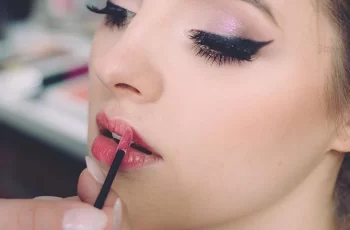
Can I use lactic acid after a salicylic acid mask?
No matter how much you know about skincare, the word “acid” will undoubtedly raise some concerns. So when it comes to mixing, applying, and using these acids, it can be a little daunting, especially when it comes to figuring out the best order to use different skincare products.
So, with that in mind, let’s take a look at whether or not lactic acid can be used after a salicylic acid mask.
Can salicylic acid and lactic acid be used together?
Yes, it is considered safe to use salicylic acid and lactic acid together because they work on different areas of the skin and can target different skin concerns, so they won’t cause irritation or allergic reactions. Both ingredients are chemical peel ingredients that are very effective for achieving a variety of skin results. Fortunately, you can use salicylic acid and lactic acid together because of their different molecular sizes. Lactic acid is considered the mildest of the chemical exfoliating acids, known as alpha hydroxy acids (AHAs). This is because their molecular size is very large, so they can’t penetrate deep into the skin. Salicylic acid, on the other hand, has a smaller molecular size and is oil-soluble, which means it can reach the lower layers and clear the pores of excess sebum, dirt, bacteria, and other impurities.
If you want to learn more about these two acids, you can find more information on The Beauty Insiders blog.
What is salicylic acid?
What is lactic acid?
What should you use after a salicylic acid mask?
By understanding the best order to apply your skincare products, you can ensure you get the most out of your powerful formulas packed with active ingredients.
You might think that applying a mask at the end of your skincare routine provides the best skin results. In fact, after cleansing your skin, you should apply your mask before the rest of your routine, especially if it contains salicylic acid.
Below is an example of an evening skincare routine that you can adapt to your needs.
Evening Skincare Routine
Cleanser – Removes all traces of makeup and the day’s impurities. For your evening routine, you can also double cleanse to ensure your skin is thoroughly cleansed. Don’t forget to combine your cleanser with a washcloth for best results.
Mask (Best) – Masks should be applied to cleansed skin between the other steps of your skincare routine. It is generally considered best to use a mask once or twice a week.
Facial Toner – If you have already used a mask high in salicylic acid, you can skip this step. Choose a toner that is rich in PHA or lactic acid to avoid irritating your skin.
Serum – One that contains hyaluronic acid or other humectants to provide extra moisture to the skin.
Oil – This is another best step if you want to recharge your skin overnight. Choose a formula with plant extracts to nourish and regenerate the skin.
Moisturizer – Lock in all the benefits of the previous steps with a layer of moisturizer. In the morning, your skin will appear refreshed, rejuvenated, and revitalized.
What Not to Mix with Salicylic Acid?
Avoid retinol and salicylic acid, as they can often cause severe dryness and discomfort to the skin.
If you want to learn more, read our blog post “What Not to Mix with Salicylic Acid?”
Which is Stronger, Salicylic Acid or Lactic Acid?
Of the two acids, salicylic acid is considered stronger and most beneficial for combination, oily, or blemish-prone skin. You’ll find salicylic acid as one of the most commonly used BHAs, often included in effective skincare formulas to fight blemishes, spots, and acne. Because salicylic acid is related to aspirin, it has anti-inflammatory properties that exfoliate the outer surface of the skin. Accumulated dead skin cells, impurities, and bacteria are eliminated, leaving skin clear and fresh, while salicylic acid also penetrates the underlying layers to open up the pores.
As for lactic acid, this is an AHA that is known for its gentle effects and is a popular chemical peel for people with dry skin and light skin. Sensitivities. This is because, as I mentioned before, lactic acid has a very large molecular size, which means it only works on the outer surface of the skin. Therefore, cases of skin irritation are very rare, but it is still important to do a 24-hour patch test before applying creams to your entire face.
Moisturizer before salicylic acid?
You will find salicylic acid in a variety of skin care products, from face washes to serums to essential oils. This leads to the idea of applying salicylic acid to the skin before moisturizer, but if you still have problems, keep in mind the best order. When applying skin care products, start with the thinnest consistency and gradually work your way up to the thickest. This ensures that the active ingredients and formula can do their work without encountering the physical hindrance of a thick product texture.
How often do you use a salicylic acid mask?
Due to the generally high levels of salicylic acid in masks, it’s best to only use it once or twice a week, if necessary. Overuse of formulas with high amounts of salicylic acid can make your skin dry, tight, and uncomfortable. You may also notice that your skin barrier is deprived of sebum (the natural oil in your skin), causing your skin to overproduce, which over time can lead to pimples and acne.
Okay, hopefully I’ve answered some of your questions about using lactic acid after a salicylic acid mask. If you have any questions or you’re into skin, don’t forget to follow us on Instagram.


